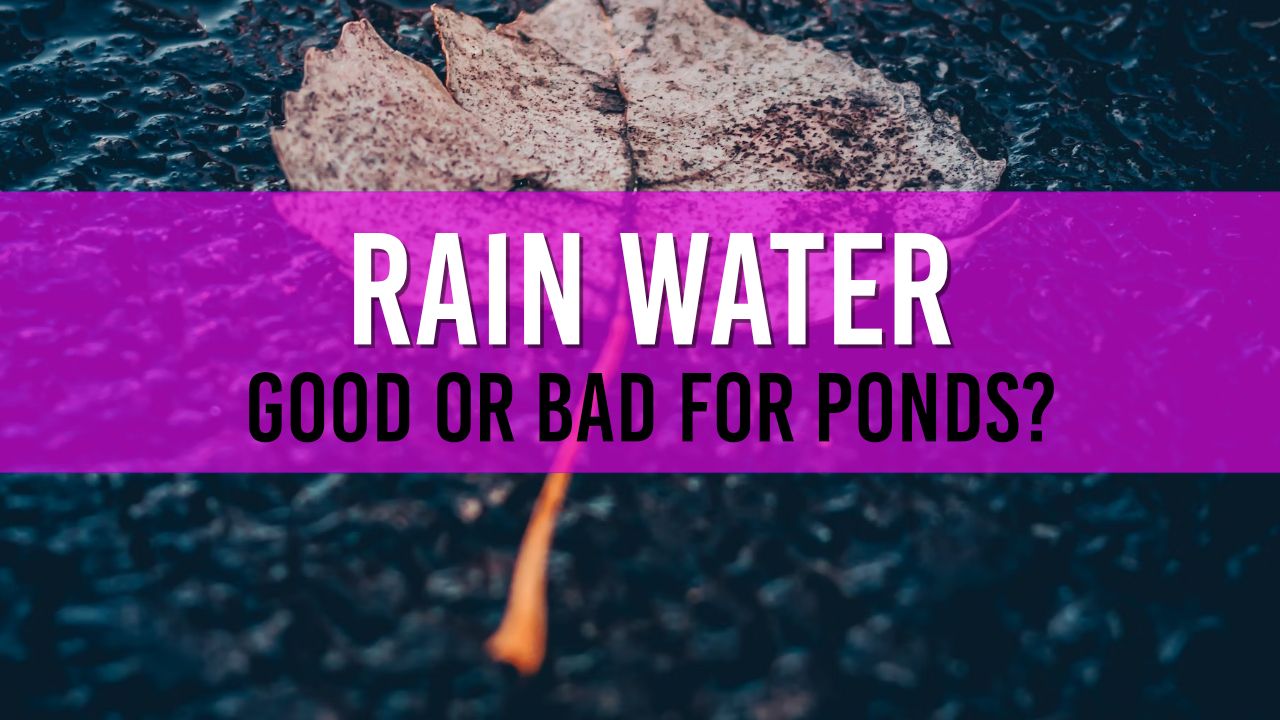Can I use rainwater to fill my pond?
Rainwater is a 'free' source of water and can be used to fill your pond. In fact, Rainwater in most circumstances is healthier for your pond than tap water. There are some caveats to this, and I cover the potential problems with rainwater for your pond.

Table of Contents
Yes, you can use rainwater to fill your pond, as it is a natural and environmentally friendly option. However, there are some factors to consider before using rainwater to ensure the health and well-being of your fish and aquatic plants. In this article, I will discuss these factors and provide tips on how to use rainwater effectively in your pond.
Benefits of Using Rainwater
Rainwater is soft, meaning it has low levels of dissolved minerals such as calcium and magnesium. This can be beneficial for certain fish species and aquatic plants that prefer softer water. Additionally, rainwater is free and readily available, making it a cost-effective option for topping up your pond.
Potential Issues with Rainwater
While rainwater is a natural choice, it may contain pollutants and contaminants, especially in urban areas. Airborne pollutants can accumulate on rooftops and other surfaces, which are then washed into the pond by rainwater. These pollutants may include chemicals, heavy metals, and other harmful substances that can impact the health of your fish and plants.
Tips for Using Rainwater in Your Pond
- Collect and store rainwater: Collect rainwater using a rain barrel or a similar system to allow any contaminants to settle before using it in your pond. This also allows you to have a supply of rainwater available whenever you need it.
- Test the water quality: Before adding rainwater to your pond, test the water quality to ensure it is safe for your fish and plants. This includes testing for pH, ammonia, nitrite, and nitrate levels.
- Pre-treat rainwater: If you find that the rainwater is contaminated, consider using a water treatment product to neutralize any harmful substances before adding it to your pond.
- Use a pond pump: A pond pump can help circulate the water in your pond, preventing stagnation and promoting oxygen exchange, which is essential for the health of your fish and plants.
- Monitor your fish and plants: Keep a close eye on your fish and plants after adding rainwater to your pond. Look for any signs of stress or illness, such as changes in color, unusual behavior, or poor plant growth.
- Regularly clean and maintain your pond: To ensure a healthy pond environment, it's essential to clean your pond pump, replace your pond filters, and remove debris from your pond regularly.
By following these tips, you can safely use rainwater to fill your pond, providing a natural and cost-effective option for maintaining a healthy pond environment.

